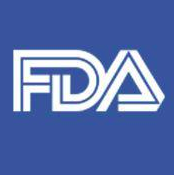Editor's note: The regulation, titled "Current Good Manufacturing Practice and Hazard Analysis and Risk-Based Preventive Controls for Food for Animals," is available for review and public comment via the Federal Register. Comments will be accepted through February 26, 2014.
Update (Oct. 31): The FDA has just added to its website a Powerpoint presentation (available by clicking here) on the Proposed Rule for Preventive Controls for Food for Animals.
Source: New York Times
The U.S. Food and Drug Administration (FDA) proposed rules on Oct. 26 that would govern the production of pet food and farm animal feed for the first time.
The regulation would help prevent food-borne illness in both animals and people, officials at the agency said, as people can become sick from handling contaminated animal food and from touching pets that have eaten it.
The proposal comes six years after the biggest pet food recall in history, when a Chinese producer contaminated dog and cat food with melamine, a compound used in plastics, causing the deaths of animals across the United States.
The public outcry helped lead to the inclusion of animal food in the Food Safety and Modernization Act, a landmark food safety bill, which passed with broad support in 2010 and was the first major overhaul of the Food and Drug Administration’s food safety laws since the 1930s. It gives the FDA more control over food imports as well as broad new powers to set standards to prevent contamination of produce and processed food. The rules proposed Friday offer details on how this would be accomplished.
Jerky treats have also caused pet deaths. Since 2007, the FDA has counted about 580 pet deaths, nearly all dogs, connected to chicken, duck and sweet potato jerky treats, nearly all of which were imported from China. It is not clear if the new regulations could have prevented the deaths because the FDA is not sure yet what the hazard is.
The agency had received more than 3,000 complaints about the jerky over five years. The reports involve more than 3,600 dogs and 10 cats. One sickness associated with the treats, an illness of the kidneys known as Fanconi syndrome, appears to be concentrated more in smaller dogs, the agency said.
The proposal is open for public comment for 120 days. If passed, it would regulate the production of feed for millions of farm animals, including cows, pigs and chickens, as well as pet food. In all, there are about 78 million dogs and 86 million cats as household pets in the United States.
Much like regulations proposed for human food this year, the rules would require makers of animal food sold in the United States to develop a written plan to prevent food-borne illnesses, like salmonella, and to put it into effect. Producers would need to put protective procedures into place at critical points in the production process where problems are likely to arise.
For example, for canned dog food, producers might have to set up a system to monitor whether the food has been cooked long enough at the right temperature, said Michael R. Taylor, FDA deputy commissioner for foods and veterinary medicine. They would also need to keep records to document it.
“We know from experience that when the system doesn’t deliver, people get irate,” Taylor said. “It’s all about having a systematic plan to make the food safe.”
The rules would also require producers to correct problems that arise and re-evaluate their plans at least every three years. And they would require them to maintain standards of cleanliness for the facilities and people who work in them. Smaller businesses would have more time to comply with the rules, once they become final. If companies do not comply, the agency said it could take any number of actions, including issuing warning letters, advising consumers, and in some cases, seizing products and prosecuting producers.
The proposal does not address the use of antibiotics given to animals, sometimes in feed. Public health advocates warn that the practice is contributing to dangerous levels of antibiotic resistance in humans.



